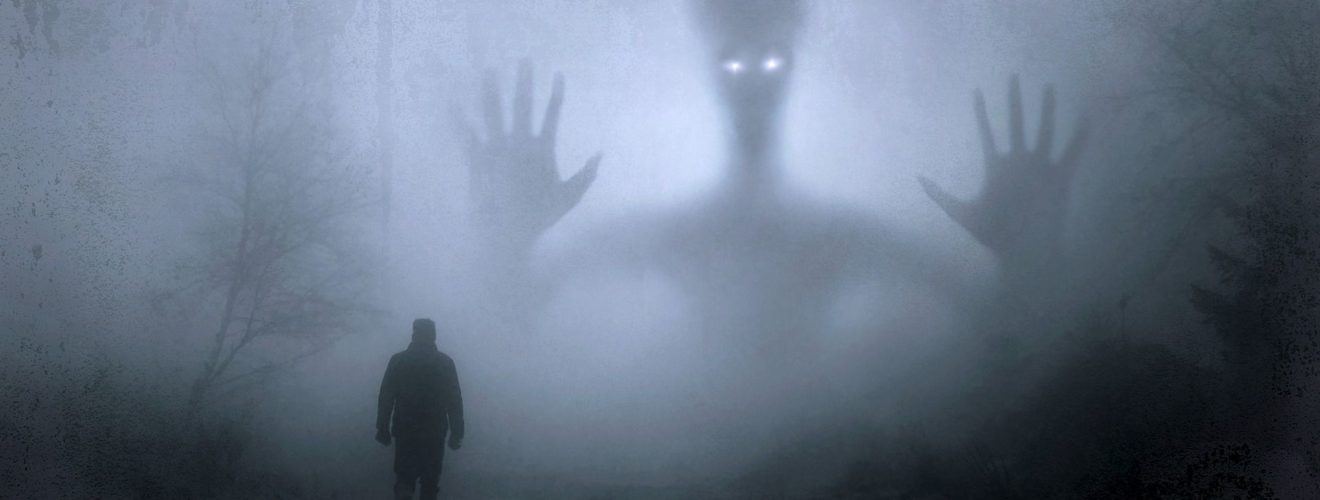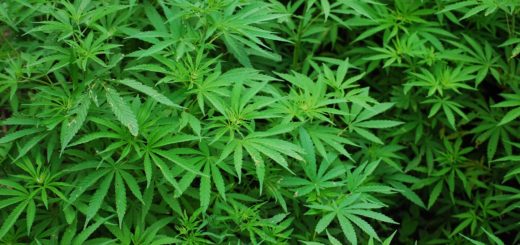When science meets the supernatural

In 1947, on a major trade route between Malaysia and Sumatra, an unusual distress call was sent out from an unknown ship. “All officers, including the captain, are dead. Lying in the chart room and bridge. Possibly whole crew dead”, followed moments later by: “I die…” 1. When an American ship located the ill-fated SS Ourang Medan, they found the entire crew, including a dog, lying frozen in contorted positions, with horror-struck expressions on their faces. There was no apparent cause of death. Before the ship was successfully towed away, smoke rose from the lower decks and the vessel suddenly exploded – perhaps conveniently removing any evidence of the incident. As such, the mystery remains unsolved.
This story isn’t a one-off. YouTube channels such as Buzzfeed Unsolved2 and Bedtime Stories3 are filled with creepy cases of the unknown, and almost all of us have stories of unexplained happenings in our lives. Whether or not you attribute these to ghosts will depend on your own personal beliefs (and probably on how spooky the situation is). In Taiwan, 90% of people report having seen a ghost4, which means it’s either an extremely haunted place, or there is at least some cultural influence in how people explain the paranormal.
Some ghost stories do have an explanation, however. If one of these explanations applies to you, then it could actually save your life to find out the cause rather than dismissing it as ghoulish goings-ons. And no, that isn’t even hyperbole.
Poisoned air
In 2015, Reddit user RBradbury1920 shared a now-well-known post seeking legal advice following a series of bizarre post-it notes found in their apartment5. The post-it notes started innocently – with to-do lists for tasks they did in fact need to do but, eerily, in a handwriting that wasn’t familiar. After several of these, RBradbury set up a webcam to try to catch the letter writer, only later to find folders on their computer deleted, and the ominous note: “Our landlord isn’t letting me talk to you, but it’s important we do.”
Another Reddit-user was quick to suggest carbon monoxide poisoning. Symptoms include headaches, tiredness, confusion, and memory loss6; could they be writing these notes to themself in a state of intoxication and just have no memory of it? Sure enough, once a carbon monoxide detector was installed, RBradbury posted back to say that this was indeed the cause of their unusual notes.
While there’s some speculation that the post is a fake (the name RBradbury does seem a bit too convenient), it is still a useful lesson. We are all familiar with tragic stories of carbon monoxide deaths and knowing the signs for low-level exposure can be vital in preventing this. Toxic gases such as carbon monoxide are one of the proposed explanations for the unusual deaths aboard the SS Ourang Medan – though, despite the incident being logged by the US coast guard, there are theories that this story is entirely fabricated.
Spores or spooks
Carbon monoxide isn’t the only airborne spook-generator. Toxic mould has been indicted, though its connection to creepy occurrences is less clear-cut. Certainly, the NHS website doesn’t cite psychological symptoms associated with this7. However, in 2015, a group of researchers in America visited well-known “haunted” buildings to test the air quality to identify whether there was a link between reported spooks and mould spores in the air. The lead researcher, Shane Rogers, explained that their initial findings suggest a higher burden of mould “in places that are reported to be haunted […] than in places that are not”, even when compared with “similarly ‘spooky’/ damp places.” The team now hope to analyse samples collected from these sites in order to compare the microbes and see if there are any differences.
Shane believes it’s too soon to say whether mould really is the cause of reported hauntings, even though the early data indicates the possibility. He hopes that “the genetic data [from the microbes] will be the most helpful to improve our understanding.” If the microbial species between the sites are significantly different, and particularly if any species have an association with mind-altering effects, it could provide a fascinating new insight.
Taking the “fun” out of “fungus induced hallucinations”.
Hallucinations are now recognised in modern medicine. They affect over 70% of people with schizophrenia, are commonly reported by people who have taken psychedelic drugs, and can even occur in people with no other symptoms of a mental health condition8. But in the late 1600s, when young girls in the village of Salem suffered from unusual fits, reported seeing strange imagery of “black dogs and red cats”, and claimed that “the Devil came to [them] and bid [them to] serve him”9, hallucinations were never considered. Suspicion and fear led to another conclusion: witchcraft.
Research from the 1970s offered up another explanation. The women condemned in the Salem witch trials may have been exposed to a psychedelic substance. The fungus ergot is suspected to have infected stores of rye grain, a staple of the villager’s diet. This could explain why these reports became common, with more than 200 people accused of witchcraft over the course of the trials.
The power of the mind
Once enough of these cases were reported, it was easy for mass-hysteria to sweep across Salem. Each new case seemed to confirm the idea that dark forces had taken root in the town. If we want to believe in something, we humans have a very good mechanism for spotting the facts that back-up our beliefs and discarding the facts that don’t fit our hypothesis. It’s a phenomenon scientists are keenly aware of – our good old friend, confirmation bias.
An off-piste example of this comes from a US study comparing marijuana use with prescription drugs in the treatment of depression10. In a survey, researchers found cannabis was safer and more effective at managing symptoms than pharmaceuticals. But there’s a problem: this survey was conducted at an advocacy group meeting for the legalisation of the drug. Users who are in favour of drug reform are much more likely to seek out the positive effects of marijuana and remember this as evidence to back up preconceived ideas. That’s not to say that it might not have a positive effect – just that this study design introduces bias and doesn’t stand up well to scrutiny. A clinical trial would, ethics pending, be a much more reliable test.
Suggestion is a powerful force too. I wouldn’t consider myself someone who is too heavily freaked out by scary films – I don’t mean to impress you but I watched Haunting on Hill House all on my own. But, on another occasion, watching a horror film with a group of friends got me so riled up that I genuinely cried at the final jump scare. Sometimes, facing demons with your friends can make matters worse. You feed off of each other’s nervous energy and corroborate each other’s experiences.
Science vs the unexplained
Science is far from explaining everything – but where would the fun be if there were no ghost stories to keep us up at night or, for that matter, no unsolved research questions left to keep academics up at night? Paranormal activity in your home could be a cause for concern (check your carbon monoxide alarm regularly, ghosts or not!). And if in doubt, Glasgow does have its own literal ghosthunters11. Next time things go bump in the night, remind yourself that it probably isn’t a ghost; but if it is, comfort yourself in the knowledge that you might just find your 15 minutes of fame in a spooky YouTube compilation.
This article was edited by Ailish McCafferty.
References
- https://www.youtube.com/watch?v=5KNoB2RUFEQ
- https://www.youtube.com/channel/UCKijjvu6bN1c-ZHVwR7-5WA
- https://www.youtube.com/channel/UCCD4-G3Aokt2sM7TYQV2HmA
- https://theconversation.com/why-believing-in-ghosts-can-make-you-a-better-person-104385
- https://www.reddit.com/r/legaladvice/comments/34l7vo/ma_postit_notes_left_in_apartment/
- www.nhs.uk/conditions/carbon-monoxide-poisoning
- https://www.nhs.uk/common-health-questions/lifestyle/can-damp-and-mould-affect-my-health/
- https://theconversation.com/psychotic-experiences-are-quite-common-even-among-people-who-dont-have-a-mental-health-condition-124236
- https://www.smithsonianmag.com/history/a-brief-history-of-the-salem-witch-trials-175162489/
- Link to press release; more detail in full paper https://news.umich.edu/many-users-prefer-medical-marijuana-over-prescription-drugs/
- https://www.thegpi.co.uk/











Brilliant article and just in time for Hallowe’en too! I enjoyed reading it. Could the prevalence of mould in supposedly haunted houses not just be an indicator that houses considered to be haunted are usually old, cold, abandoned, and/or damp?
Hi, thanks for your comment! This is the author, Kirstin, here. When I contacted the lead researcher on this study he suggested that they have found a “higher burden” of this mould in places that are reported to be haunted compared to similar “spooky/damp” places. It is currently unpublished so I don’t know their methods in detail but, from my understanding, they are comparing “haunted” places with similarly old/ abandoned/ damp places that have not been reported as being haunted. They are also planning to conduct a comparison of the genetic data from mould samples collected at ‘haunted’ and ‘not-haunted’ sites so will be interesting to see if there are differences here that could explain the phenomenon.